Best budget MTB forks – our expert choice of affordable dampers that will enhance your ride
Decent budget suspension forks that will add control, grip and predictability to your mountain bike
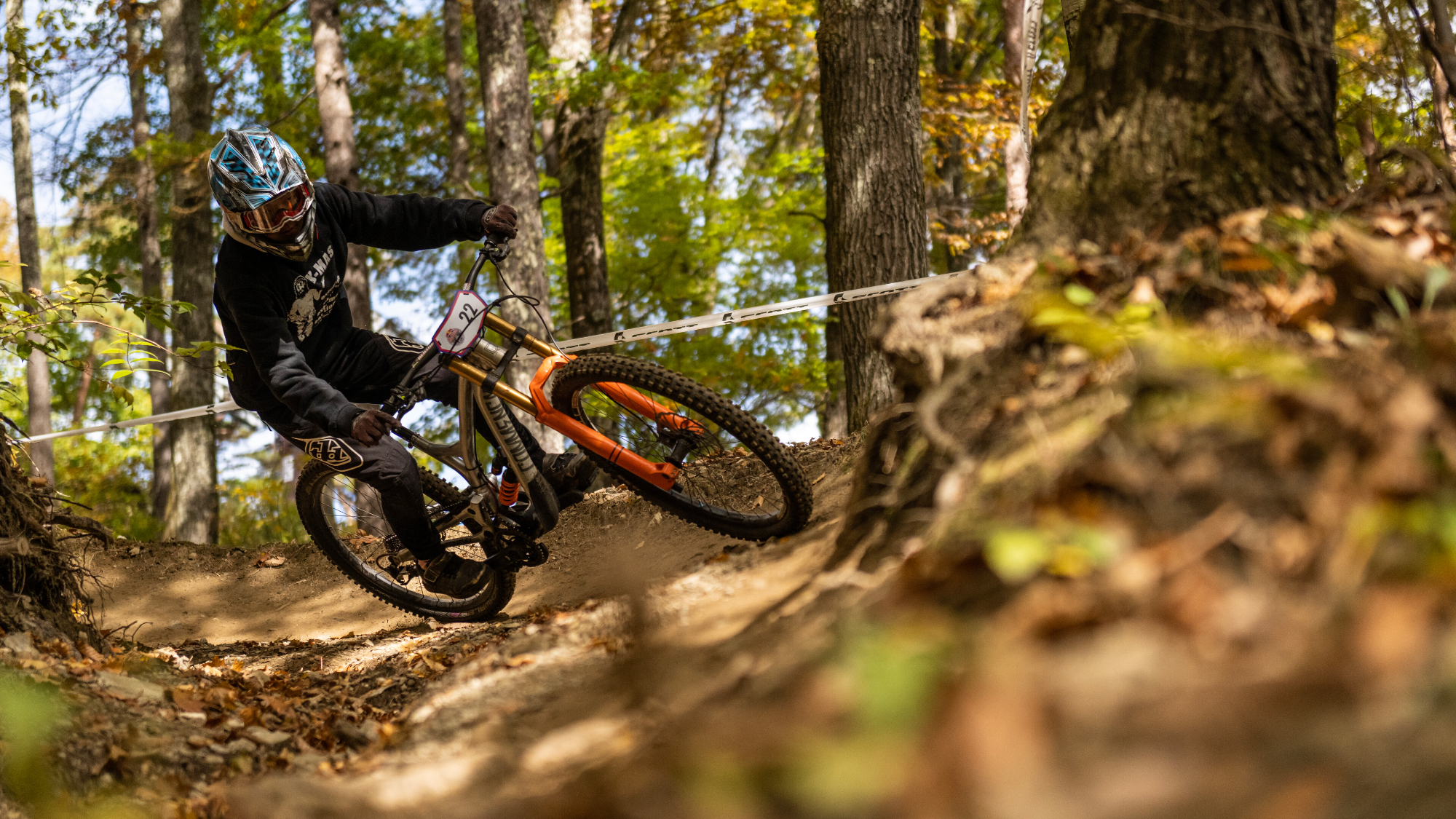
The job of the best MTB suspension forks is to provide maximum control, grip, and comfort to the front end of a mountain bike, and when done well the best suspension forks improve on-trail speed and rider confidence.
In times gone by, budget mountain bike forks were nothing to shout about and their function was satisfactory as opposed to noteworthy. Fortunately, over the past few years, thanks to trickle-down technology, entry-level suspension has come on in leaps and bounds and even the most basic units can enhance the bike's performance. But what should you be considering when searching for new forks on a budget?
There are several things to consider when choosing a new MTB fork to ensure you're getting the best one for you. Our expert testers have ridden all the forks here extensively so we can give you a proper user's opinion, not just a catalog-based guess, to separate the great from the grim. Top of our picks for the best budget MTB forks is the Marzocchi Bomber Z2 4.5, with the RockShox Judy Silver TK our best value choice.
Do you need a hand with picking out the right model for you? Jump to the bottom for our guide on how to choose the best budget MTB forks.
Best budget MTB forks
Why trust BikePerfect

Specifications
Reasons to buy
Reasons to avoid
We have already gone in-depth in our full Marzocchi Bomber Z2 RAIL Gen 2 review, but the essentials you need to know are that it’s a super-smooth, durable, and dependably controlled fun-time fork once it’s set up right.
The Z2 is based on the excellent Fox 34 Rhythm but with reworked lowers for a signature ‘M’ brace that’ll take a 27.5 x 2.8 or 29 x 2.6in tire. The Rail damper revisits Marzocchi’s legendary succulent ‘open bath’ damping tech for a simple and occasionally noisy but very smooth and effective result on the trail. The extra oil and thicker, stiffer 6000 series alloy add weight, but keep it tracking and holding traction as well – if not better – than its more expensive Fox brethren. Like 'Zocchis of old, it’s also designed to be as relentlessly reliable, but it’s easy to service if you want to help it stay healthy.
The recommended pressures on the leg sticker are too low for aggressive riding and we’d suggest adding the third volume spacer supplied in the box straight away to stop it from blowing through its travel. You’ll also need an adaptor for any disc rotors over 160mm which is weird, but not a deal-breaker when the rest of the performance is so good.
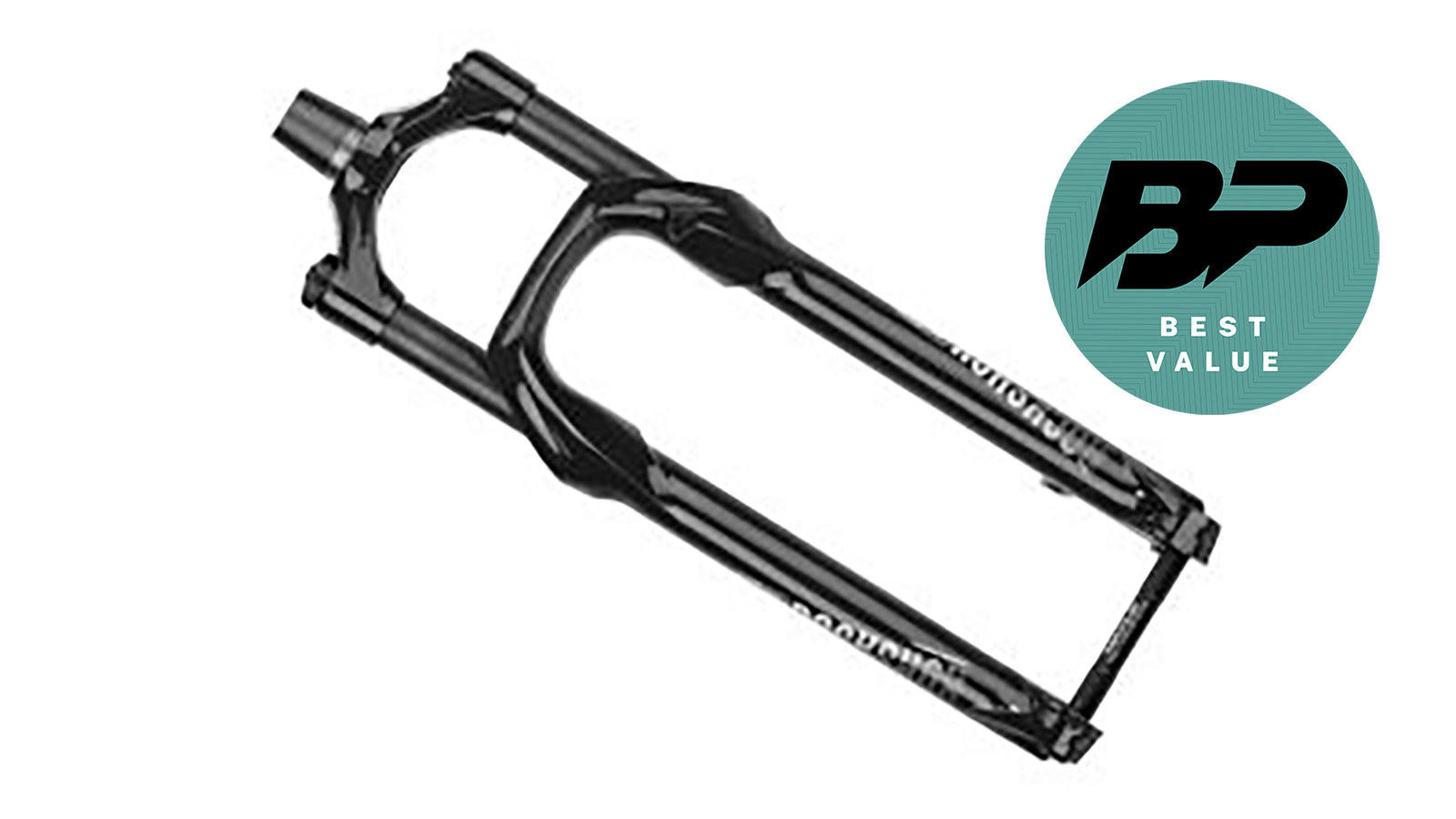
RockShox Judy Silver TK
Specifications
Reasons to buy
Reasons to avoid
Judy rejoined the RockShox forks lineup as the cheapest named fork (the TK 30 isn’t much different though) and it's compatible with most bikes.
As you might guess from the wide range of potential prices there are loads of different options including short and long offsets in 27.5 and 29er which is super rare, tire clearance up to a full fat 81mm wid,th and brake rotor compatibility up to 220mm depending on the version. However, whether you can buy exactly the one you’re after depends on your local distributor, regional stock availability, and which are ‘original equipment only’. Rooting around online and you should find it eventually.
Back to basics and you’re looking at a 30mm steel leg (and potentially steel steerer) on the basic Silver models, so they’re not light but they’re strong and stiff enough to get an E-bike suitability sticker. A 15mm Maxle bolt-through axle means you’re not totally approximating steering control even in the longest 130mm travel options and the fore and aft flex adds some subtlety to the suspension action over roots and rock spreads. The ‘Fast Black’ coating keeps them smooth and hides the fact you’re riding a ferrous fork too.
The coil spring versions are very smooth over small stuff but definitely go for the more progressive and surprisingly well-balanced and easily tuneable Solo Air spring if you can. Either way, the TurnKey damper manages to keep its head on a reasonably long way into faster, rougher sections before it starts to get unpredictable.
The real win behind that RockShox logo though is the fact they’re consistently well made with decent seals and other materials, so longevity is generally much better than competitors' at a similar cost. A bit of TLC will always get you better results than fitting and forgetting, though. The Judy Gold versions get more alloy in the structure and a shot at fancier damping but by that point, we’d push for a 35.
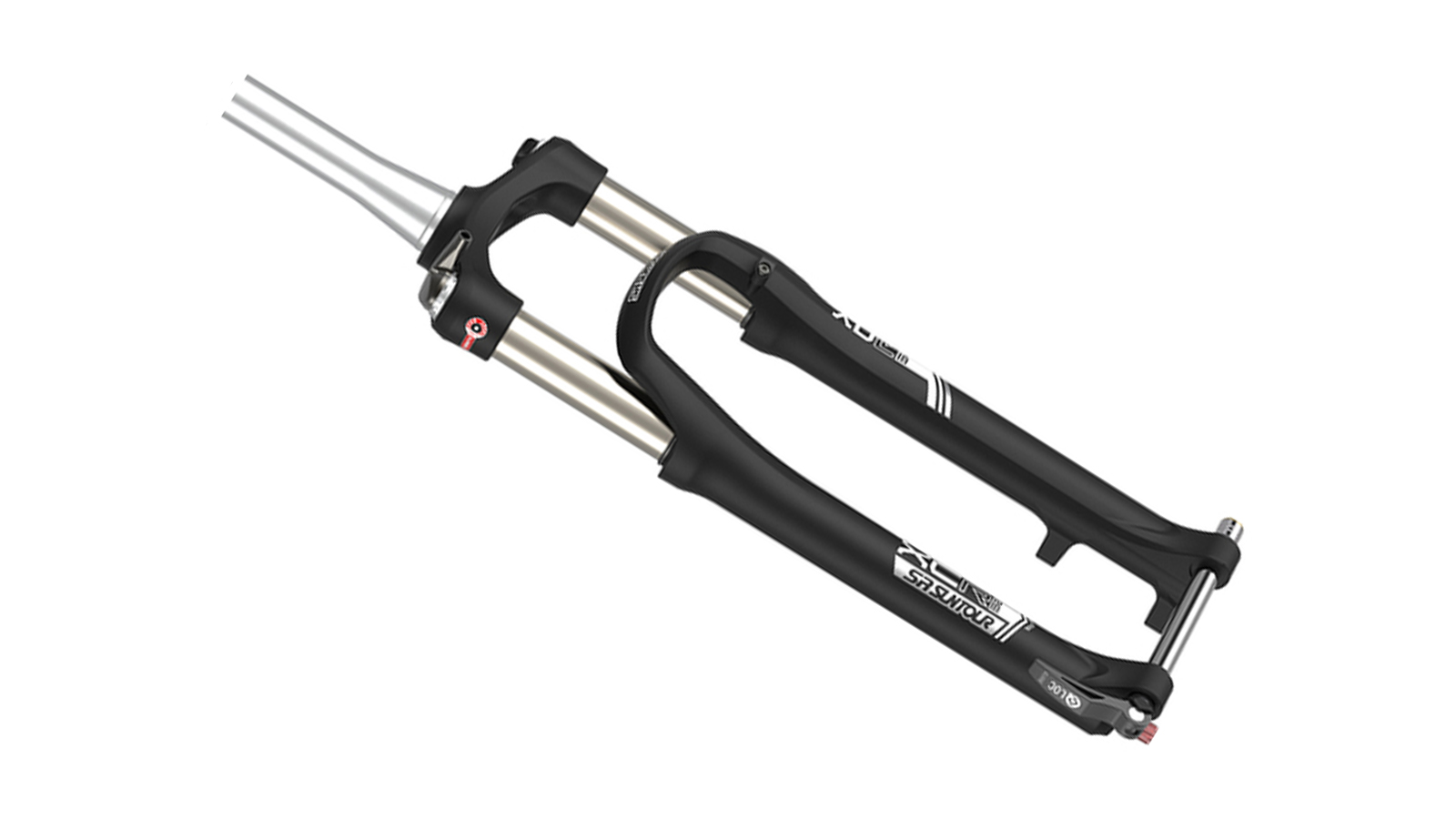
SR Suntour XCR32 LOR DS
Specifications
Reasons to buy
Reasons to avoid
A popular fit on budget hardtails from $500 /£400 upwards, this is the cheapest fork we’d be OK with riding on ‘proper’ trails for a prolonged time.
The wins with the XC32 at this price are the 32mm legs and the 15mm axle which make steering predictably accurate and keep it stiff under braking. Suntour’s ‘ingenious’ expanding-ended Q-LOC axle can be a pain to get through some hubs but it works OK if you keep it clean.
There are 100- and 120mm options in 27.5, but the 29er versions only come in 80- or 100mm, while all XCR32s are limited to a 180mm max rotor size, so the XC in the name is a clue to their suitability.
While the tapered steerer is alloy, a coil spring and steel legs mean it’s not XC weight but you do at least get a preload adjuster to give some sort of slight spring control and the rebound damper offers rudimentary taming for rougher trails. There’s even an integrated fender available to go with it. You will need to keep it clean and regularly stripped down and lubed to nurse it through wet and dirty winters though.
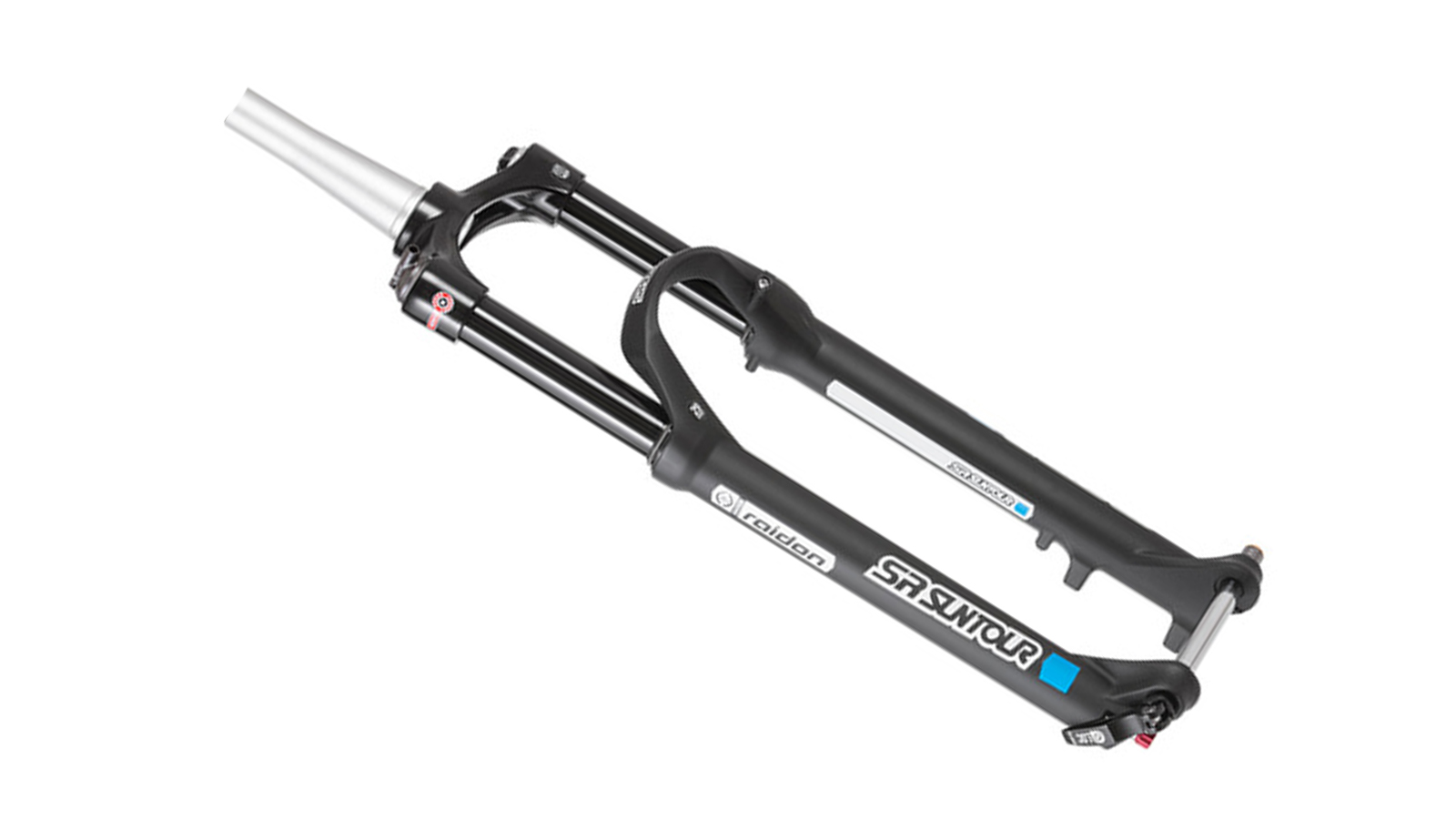
SR Suntour Raidon 34 Boost
Specifications
Reasons to buy
Reasons to avoid
Raidon is potentially a big step up from the XCR32 in the Suntour range but make sure you get the 34 model, not the 32. That’s because the larger diameter 34mm legs aren’t just a lot stiffer and more accurate in terms of steering, they also allow longer travel options, brake rotors up to 203mm and they’re strong enough to plug into E-bikes.
Despite the fatter, stronger, stiffer construction, the alloy legs and steerer plus air springs in all Raidon forks mean they start at just over 2kg which is good for an affordable fork. The 15mm QLC axle is still an acquired art that needs keeping clean and Suntour forks always benefit from more rather than less cleaning and servicing. Otherwise, the cartridge damper and better quality guts overall make for a fork that’ll cope with all conditions. The damping from the cartridge is wide-ranging and consistent enough to make a real difference too and if you want to get geeky you can improve ride feel by trimming the top out/volume adjust bumpers.
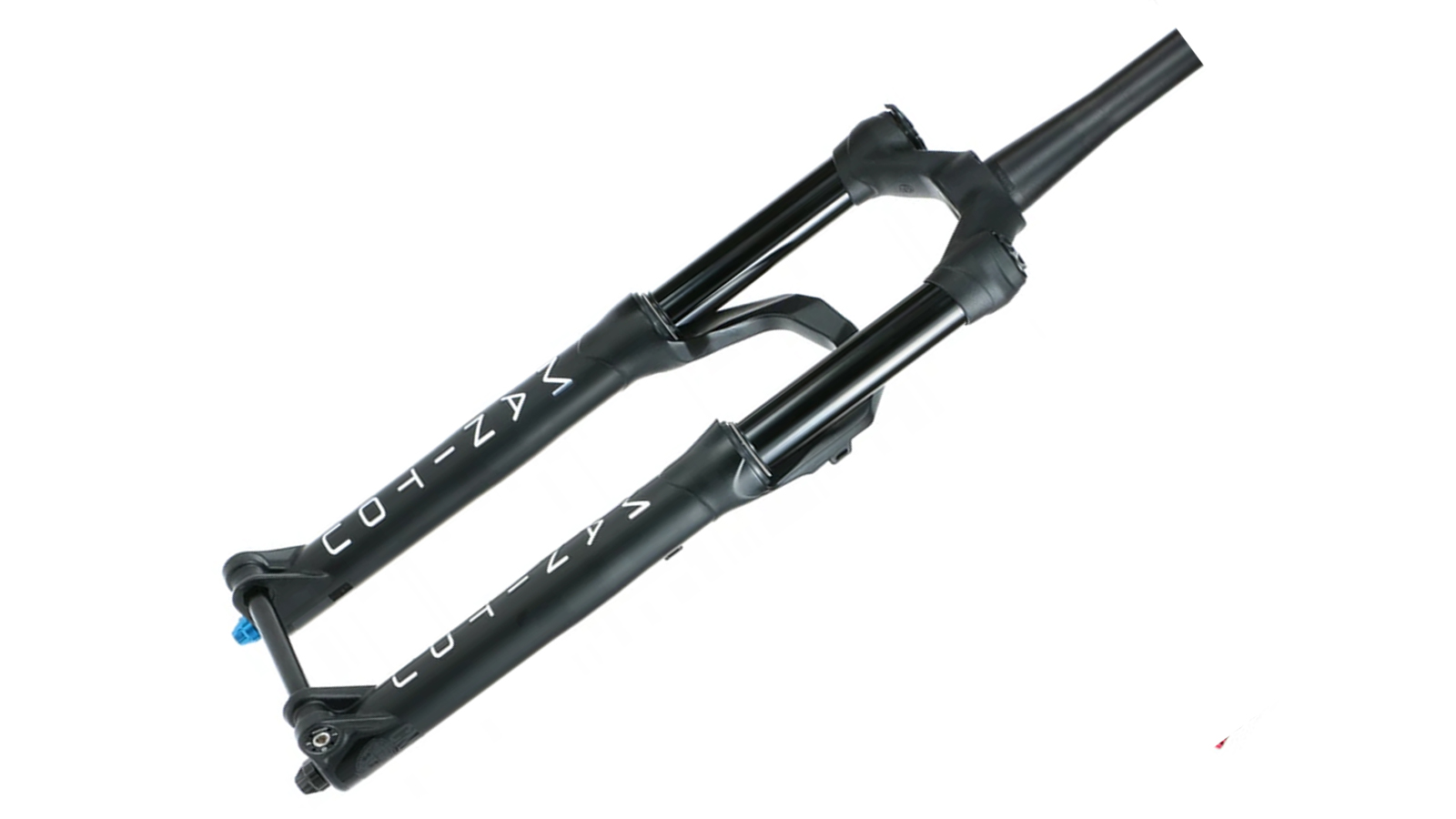
Manitou Mattoc Comp
Specifications
Reasons to buy
Reasons to avoid
Probably one of the most underrated forks around, Manitou’s Mattoc has been around for a long time but it’s still worth looking for, especially as online pricing is often much better than official RRPs.
Its slim, sloped crown and narrow stance 34mm legs make it look nerdy rather than hench. The reverse arch means it’ll be a while before ‘funny’ people stop telling you your fork is on backwards too. Regardless of looks, it’s an acceptably rigid and steerable fork as long as you’re not going mental or trying to stand an E-bike on its nose (although it is actually ‘E-Pac’ rated in everything but the 29+ version). It’s cleared for 203mm rotors and different offsets are available to sync with the latest steering setups. It comes in various travel formats with up to 40mm of internal adjustment depending on the model.
The underlying performance is good too, with an easy starting ‘Expert Air Spring’ stroke that ramps up smoothly and progressively. You can tweak air volume to alter the spring curve too. VTT compression damping and TPC cartridge rebound are also consistently controlled a long way down the hit parade. The Mattoc Pro gets a Dorado Air Spring, MC2 compression damping, and upgraded seals for an even more silky, sensitive ride. The good news is the internals of all the Mattoc models are compatible and interchangeable between the Pro, Expert, and Comp levels so you can upgrade the Comp if you want more performance.
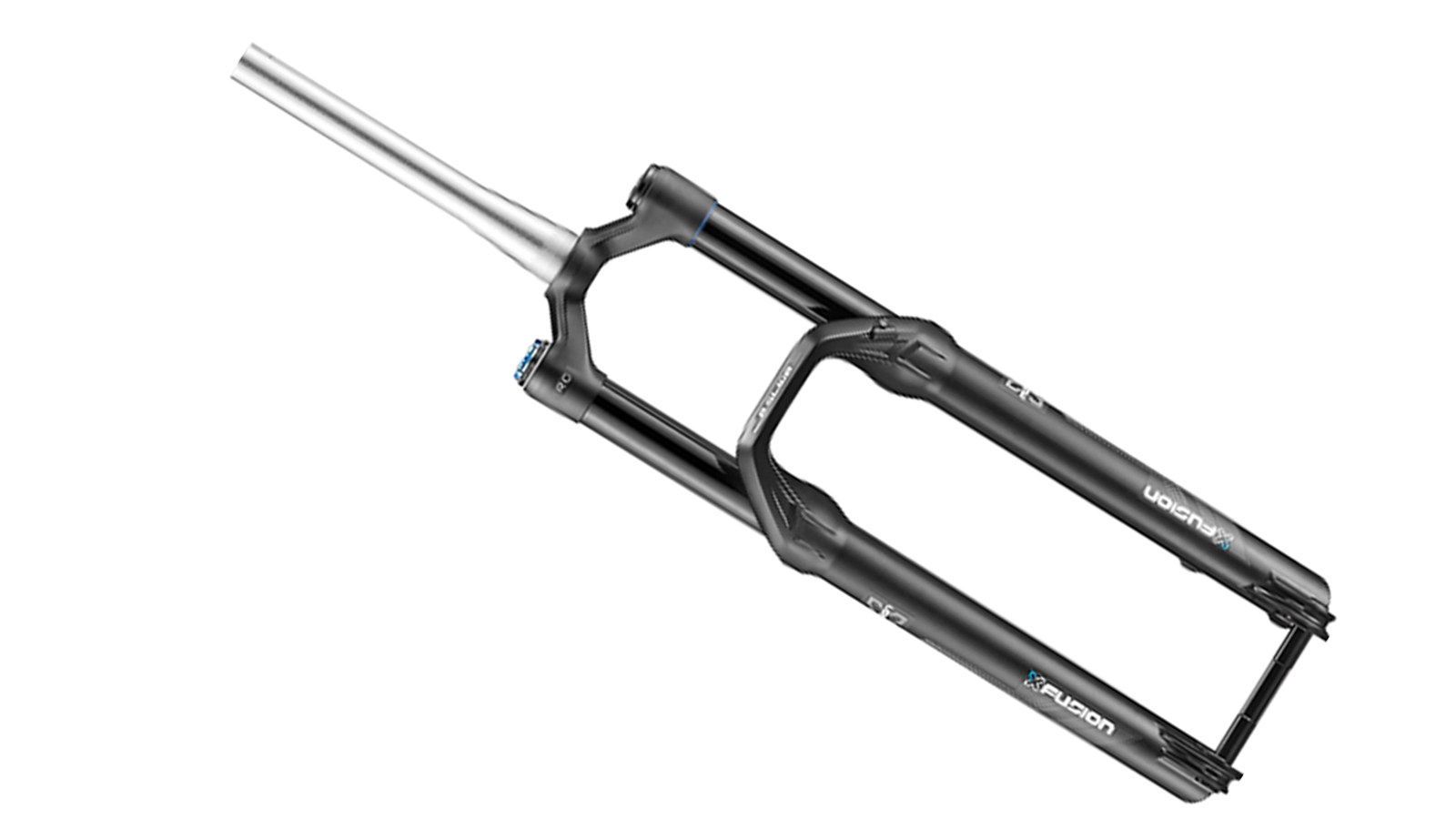
X-Fusion Sweep, Slide and Slant RC
Specifications
Reasons to buy
Reasons to avoid
We’re going to cover all the 34mm legged forks from X-Fusion here as they all share very similar architecture and features, just for different wheel sizes. Slant is the 26in 100-160mm travel fork, Sweep the 27.5in with the same travel option, and Slide the 29er which stretches from 100-140mm travel. There was a Trace 34mm fork which you might find too, which was a precursor to the Slide but with a fancier unicrown construction, but the latest Trace forks use 36mm legs.
Anyway, while Fox 34 forks are flexy, the X-Fusion 34mm models have always held their own against 35mm forks such as RockShox Pike in terms of steering and braking stiffness. They’re rated for E-bike and 203mm rotor use and they come in short or long offset versions. They are a bit heavier than the Pike though.
The air springs feel a bit notchy and insensitive compared to the latest forks with increased negative spring sizes, but for the price they’re fine. The RC uses a cartridge damper with a useful range of low-speed compression and rebound damping to control the air spring. Again it can start to feel a bit constipated when worked hard, so if you can afford the £150 / $200 or so extra, the HLR versions with the excellent DH-derived bladder damper are right up there for chaos control. Either way, it’s relatively easy to change travel internally and the forks are generally friendly towards DIY maintenance. X-Fusion’s focus on as many metal, rather than plastic, internal parts also makes them naturally durable units so if 'fit and forget' is your style, they’re a good option.

RockShox 35 Gold RL
Specifications
Reasons to buy
Reasons to avoid
It might not get a name but 35 is all that matters with RockShox’s low/mid-range fork. That’s because it means it shares 35mm legs with many of the top-end forks in the RockShox range, and it shares some of their technology too.
That includes the excellent DebonAir air spring chamber with its plush, high-traction action and easy progression tuning with screw-in ‘Bottomless Tokens'. While it can’t match the Charger dampers seen in the top-end RockShox forks, the Motion Control damper has nearly two decades of gradual evolution behind its very simple but consistently effective oil circuitry. It gives you both compression and rebound adjustment and there are lots of easy wins to be had by upgrading things like the suspension fluid and seals to those from higher-priced models.
It comes in a range of different models for aftermarket upgraders (exactly which seems to depend on your local distributor and what they’ve ordered) but like the Judy you’ll generally be able to find what you want if you hunt around online. The 35mm legs and a modern lower casting design mean that it’s a viable option right up to 160mm of travel (in 27.5in) and all 35s are happy coping with a 220mm brake rotor and an 81mm plus tire. If you’ve got the relevant end caps on your hub then Torque Cap insets add stiffness too, although if – like most of us – you haven’t, it makes fitting your front wheel more irritating.
Going for Gold also means a full alloy upper to keep weight significantly lower than most affordable forks, making the 35 the benchmark to beat for cost-effective control.
How to choose the best budget mountain bike forks
How much do suspension forks cost?
A quick scuff around online can find you brand new suspension forks for well under £80 / $100. If you want suspension more controlled than a pogo stick, seals that keep dirt out for more than a few weeks, and a construction that can cope with meter-high drops, then you need to budget at least four times that. The more you spend, the smoother the stroke will get and the more you’ll be able to tune spring rate, rebound, and compression damping. You’ll start getting forks that still work through the winter months and steering that’s accurate rather than approximate.
Get to around £500 / $600 and you’ll start to get forks that are within spitting distance of the best mountain bike forks 90 percent of the time. Architecture shared with more expensive forks also makes damper and spring upgrades to make that extra 10 percent possible too.
Once you’ve set your budget, make sure the fork comes in the spec you need. That’s particularly important when looking at older forks as it won’t seem a bargain when you realize your boost width hub or 2.6in tire won’t fit. All the forks listed here come with 15mm axle options in a boost width and if you’re running a QR wheel you should change them at the same time. They’re all available in 27.5 or 29er formats as well, but check if there’s room for the tires you use if it’s an older design. Longer travel forks tend to be more expensive not least because they need fatter legs to cope with the extra leverage and better damping not to lose control.
Is more travel better?
If you are upgrading your forks it might be tempting to increase the amount of travel as well. More suspension travel promises to increase performance by smoothing out the bigger bumps. However it isn't that simple; increasing fork travel can have dramatic negative effects on your frame geometry which will, in turn, affect handling and ride quality. We recommend sticking to what the manufacturer has specified as that is what your bike has been designed for.
Which type of suspension fork is best, air or coil?
While top-end forks might celebrate their coil springs as a path to ultra-plush righteousness, cheap forks with coil springs are the lowest common denominator. They might be smooth initially if you’re in the right weight bracket, but if the designer didn’t think the fork was worth fitting with an air spring they probably thought the same about decent seals and damping so it’ll go from pogo to wrist breaking very quickly in bad weather. Air springs are lighter and a lot more adjustable too as the air pressure can be tuned to the rider's weight or riding style.
What does Boost width mean?
Boost is the name given for the latest wheel axle spacing. Boost forks use a 110mm width hub, whereas older forks and wheels use a standard 100mm width. While it may not sound much, getting the wrong one will be make or break when it comes to installation compatibility.
The best way to confirm which spacing you have/need is to either measure your front wheel's hub width or consult your bike manufacturer's specification sheet.
What features should I look for?
Manufacturers will always try and coax you into splashing more cash with ‘bonus’ features but make sure they’re actually worth having. After all, you can make a perfectly good fender out of an old milk carton if you have to. A simple bolt-through axle will always be less clever but far more reliable than something ‘ingenious’ too. Watch out for steel legs or steerer tubes that will add a ton of weight, and always go for the largest diameter legs you can for extra strength and steering/braking stiffness.
What damping should I look for?
At the minimum, you should look for rebound damping to control the kickback after a big impact and tune the fork to your weight and aggression levels. Compression damping is a lot less important (unless you love lockout for climbs) but it’s generally a sign that at least some thought went into controlling the fork.
Preload is another basic adjustment you will find on coil forks. This allows you to adjust the amount of sag (how much the suspension compresses under rider weight alone) and perform a basic tune on the fork based on your weight, although the scope of this adjustment will likely be limited. If the fork has an air spring, the sagged position is managed using air pressure which will offer more accurate fine-tuning. You will need to factor in the cost of a shock pump to set up an air fork if you don't already have one.
What does a tapered steerer mean?
A tapered steerer is when the fork's steerer tube starts at 1/18in at the top and gradually turns to 1.5in by the time the steerer meets the fork crown. A tapered steerer allows for a stronger and stiffer design that will result in more positive steering.
It's important to find out if your bike features a tapered head tube to take a tapered steerer though. Nearly all modern-day frames feature a tapered head tube, but older or more budget bikes may use a straight non-tapered design.
How we test the best budget mountain bike forks
All the forks here have been tested extensively on a wide variety of terrain. We've been hammering them everywhere from super steep, rocky trails to flat-out boulder runs.
Meet the tester

Guy Kesteven is Bike Perfect’s tech editor. He spent a few years working in bike shops before starting writing and testing for bike mags in 1996. Since then he’s written several million words about several thousand test bikes and a ridiculous amount of bike components and riding gear.

Guy Kesteven has been working on Bike Perfect since its launch in 2019. He started writing and testing for bike mags in 1996. Since then he’s written several million words about several thousand test bikes and a ridiculous amount of riding gear. He’s also penned a handful of bike-related books and he reviews MTBs over on YouTube.
Current rides: Cervelo ZFS-5, Specialized Chisel, custom Nicolai enduro tandem, Landescape/Swallow custom gravel tandem
Height: 180cm
Weight: 69kg
